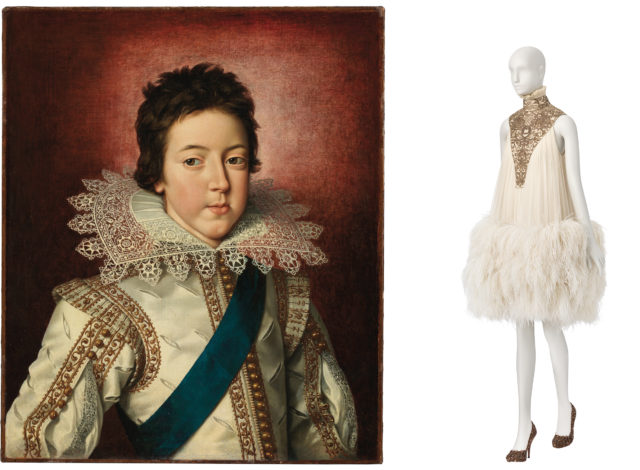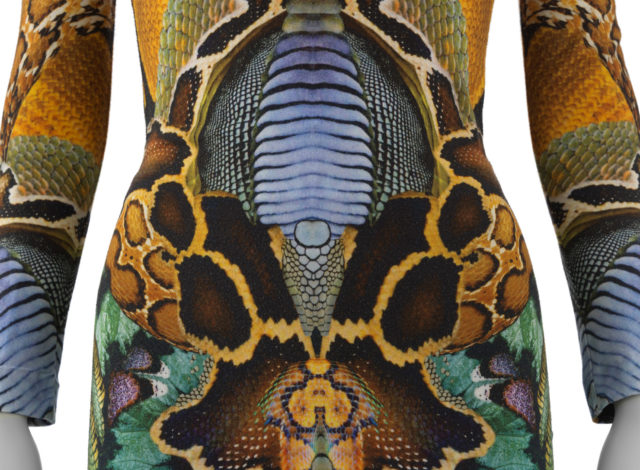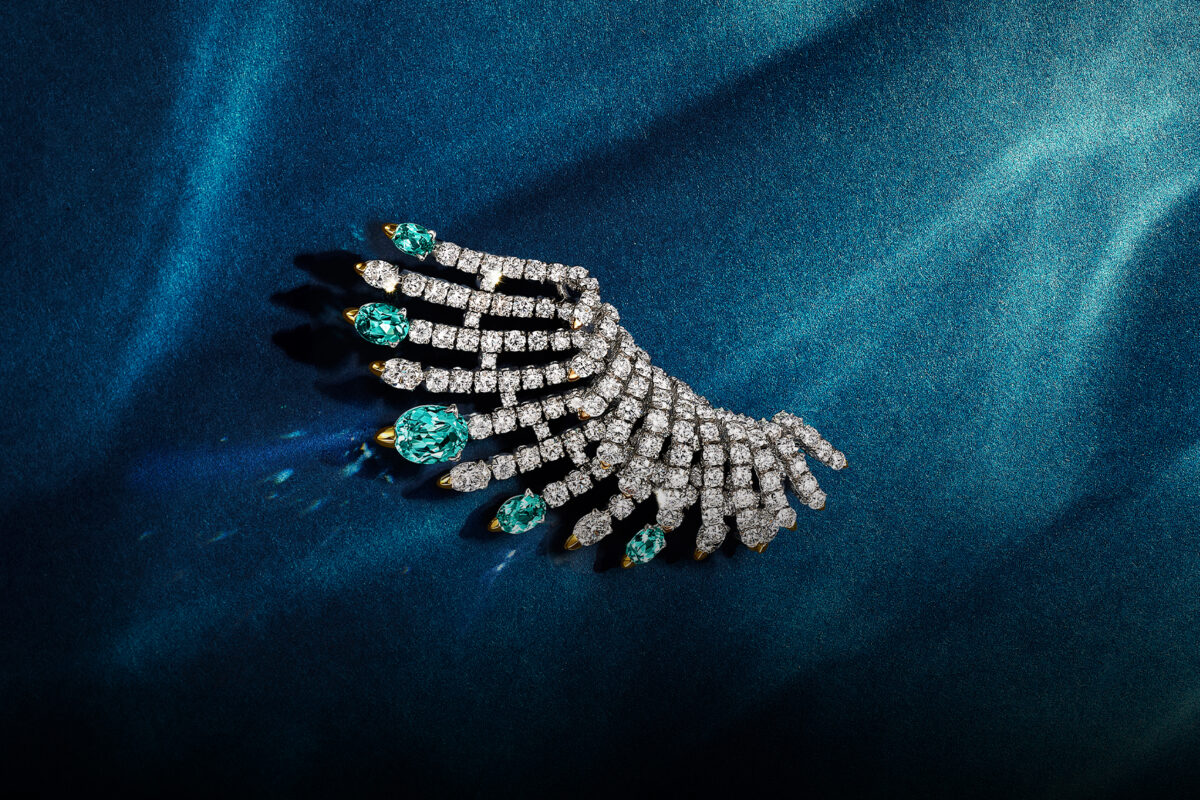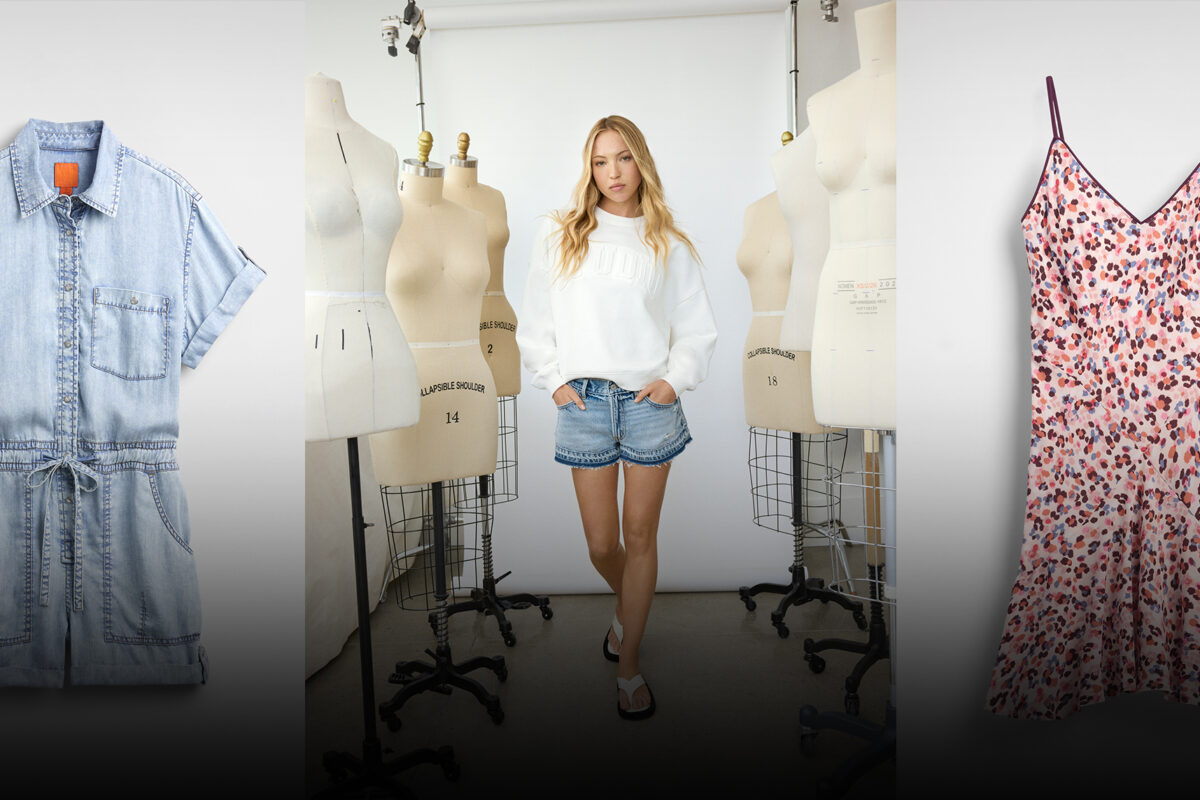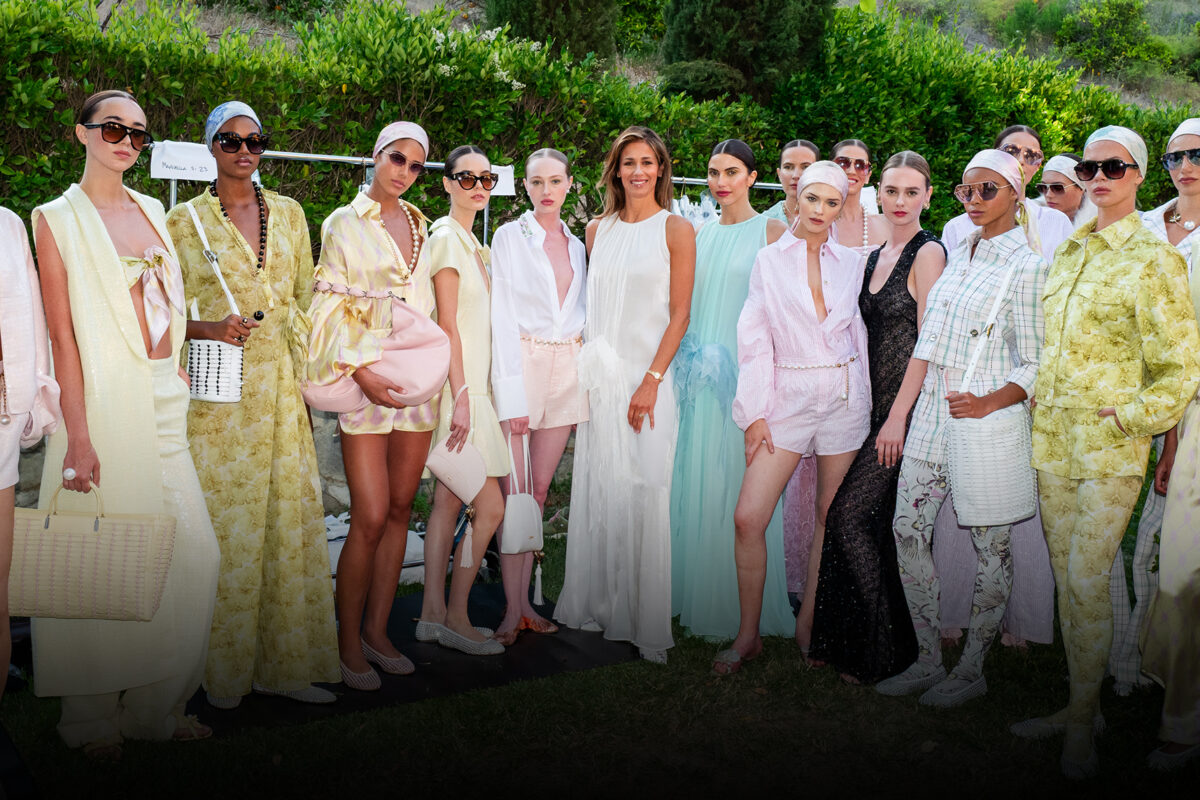A new show explores the influences behind the late maverick designer’s oeuvre
Words by ELIZABETH VARNELL
Lee Alexander McQueen’s fantastical, intense and otherworldly fashion shows, a blend of performance art and avant-garde installation propelled by dramatic collection narratives, birthed silhouettes that remain distinctive a decade after the designer’s death. Now LACMA costume and textile curators Clarissa Esguerra and Michaela Hansen are exploring the parallels between McQueen’s themes and references and those tapped by a canon of artmakers whose work is in the museum’s permanent collection. Their new exhibition, “Lee Alexander McQueen: Mind, Mythos, Muse” (Apr. 24 through Oct. 9), is both a study of McQueen’s influences and a look at similar cycles of inspiration driving works by a range of artists from Francisco Goya to Andreas Gursky.
From left: Portrait of Louis XIII, King of France as a Boy, circa 1616, by Frans Pourbus II. A look from ALEXANDER McQUEEN’s Fall/Winter 2006 The Widows of Culloden collection.
“McQueen’s multiple sources and themes led us to the idea of contextualizing his works within art history across time, place and medium,” says Esguerra. The show, comprising McQueen looks compiled over the past 25 years by Los Angeles collector Regina J. Drucker and gifted to the museum, draws attention to some of the most arresting ideas explored by the Savile Row-trained tailor. Beginning with pieces from 1996, when he arrived at the helm of Givenchy, the exhibition also includes digitally engineered prints from Plato’s Atlantis, conjured in response to rising sea levels, and selections from the Fall/Winter 2010 show Untitled (Angels and Demons), which was completed after McQueen’s untimely death by his womenswear studio under the direction of Sarah Burton, the label’s current creative director. Esguerra notes that in addition to McQueen’s body-conscious silhouettes (he loved Azzedine Alaïa’s work), the designer “drew a lot from historic European fashion, ranging from silhouettes, textiles and aesthetics of the Elizabethan era to the Victorian and Edwardian periods.”
A dress from the Spring/Summer 2010 collection.
Due to his creative range, the show is full of inventive pairings, including a link between Plato’s Atlantis garments and the coastal land masses in Gursky’s “Ocean” series, made in the same year. Esguerra points out parallels between the “undercurrents of eroticism and death” in McQueen’s matador-inspired Spring/Summer 2002 collection, The Dance of the Twisted Bull, and dramatic dichotomies of brutality and beauty in bullfighting series by Goya and Pablo Picasso. Soon the cycles of inspiration seem to play out endlessly, like a continuous M. C. Escher drawing — another favored McQueen motif. 5905 Wilshire Blvd., L.A., 323-857-6000; lacma.org.
Feature image: ALEXANDER McQUEEN’s Fall/Winter 2009 runway show.
This story originally appeared in the Spring 2022 issue of C Magazine.
Discover more STYLE news.

